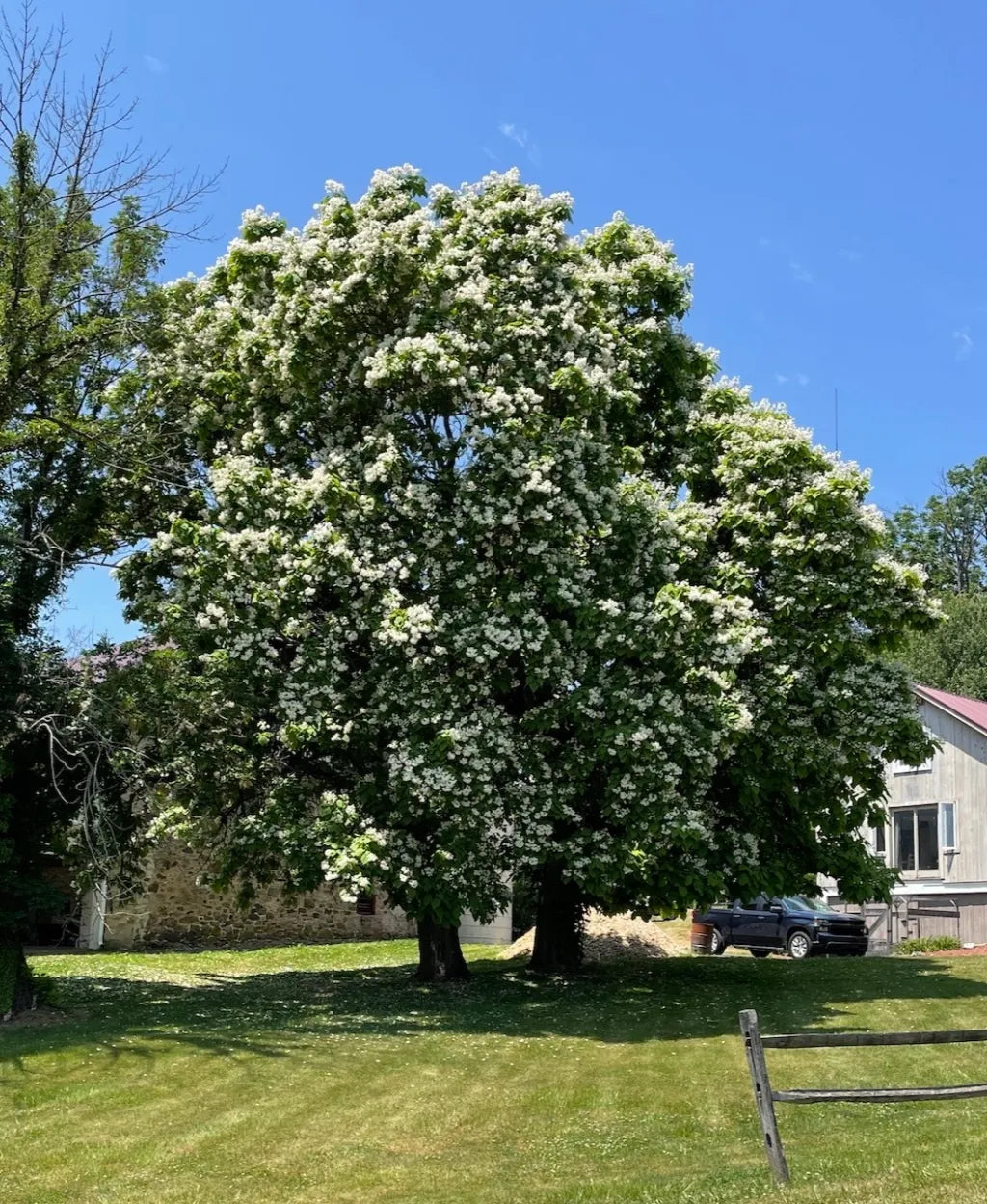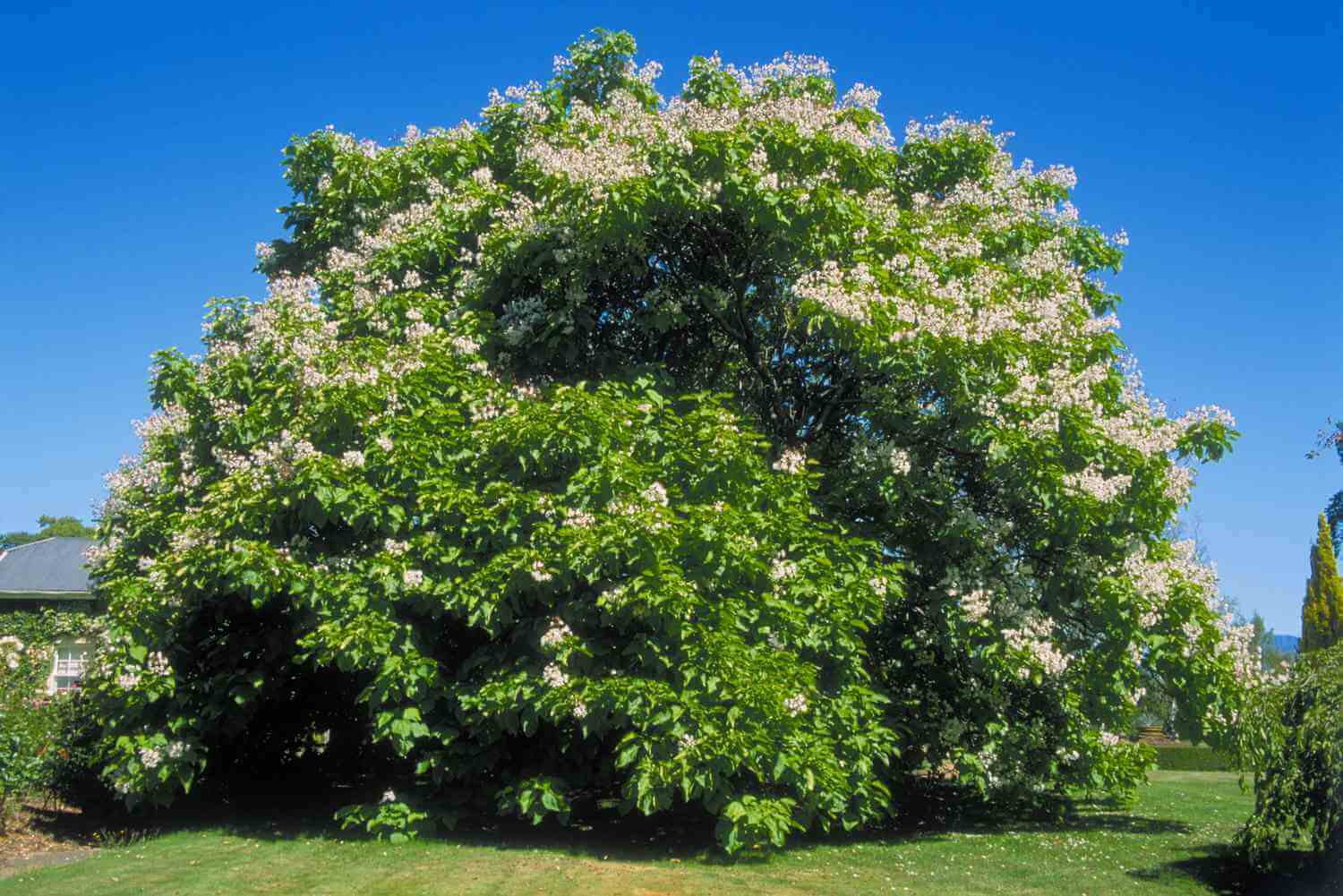Catalpa Tree for Sale
The Catalpa Tree (Catalpa speciosa Warder x Engelm) is a hardy and deciduous tree that is truly magnificent at full maturity. It has beautiful, white, showy flowers. Its large and showy flowers bloom in the spring. These flowers are white, wavy around the edges, and have accents of purple and orange. The flowers will give way to long, slender green seedpods that resemble green beans in nature, which turn brown as they mature.Its bark is ridged with thick, chunky scales.
Catalpa Tree Plant Details
Family: Bignoniaceae
Light Requirement: Full Sun
Water Needs: Moist
Height: 40 – 70 ft.
Spread: 20 – 50 ft.
Growth Rate: Slow
Bloom Time: Spring
Flower Color: White
Wildlife Value: Attracts bees, birds
Landscape Uses and Maintenance of Catalpa Tree
The Catalpa Tree will create high drama in your yard or garden with its tall, statuesque branching habit, large, light green, and heart-shaped leaves, and showy flowers. Plant this tree to create a shade garden, as a street tree on the outskirts of your property, or when making an allée, you want to make a large impact.
This low-maintenance tree will dramatically impact your property, making it a great option for the busy gardener.Plant it in a location with full sun to partial sun. Avoid planting it in the shade. This is a deer-resistant tree. Protect it when young and vulnerable to damage from deer and rabbit browsing.
Noteworthy Characteristics of Catalpa Tree
The Catalpa Tree is the host plant for the Catalpa Sphinx butterfly and is a host plant for other butterflies.
Exposure
Catalpa trees thrive in complete sun to partial shade and require at least 6 hours of direct sunlight daily. But can tolerate some light shade, particularly in hot climates. Ensure they receive ample sunlight for optimal growth and flowering.
Height at Maturity
Over 25 Feet
Usage
Fast Growing
Shipped As
Bare-root
Ships
UPS
Planting Zones
4-8





